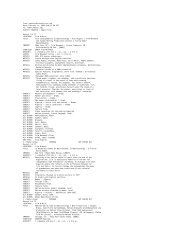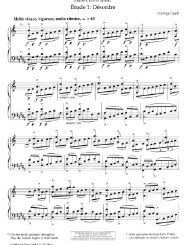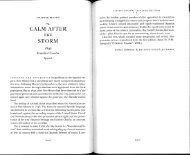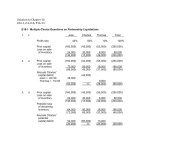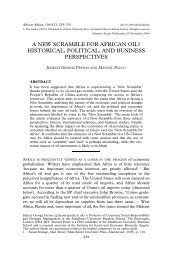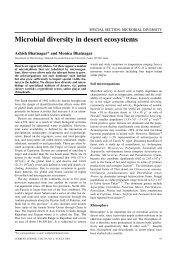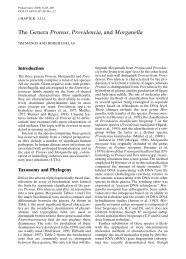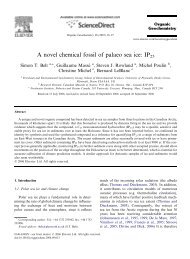Analysis by Key: Another Look at Modulation
Analysis by Key: Another Look at Modulation
Analysis by Key: Another Look at Modulation
You also want an ePaper? Increase the reach of your titles
YUMPU automatically turns print PDFs into web optimized ePapers that Google loves.
CARL SCHACHTER<br />
forms a common element th<strong>at</strong> persists through the many changes in tonal<br />
Ex. 14 Mozart: Le Nozze di Figaro, Act II, 'Voi che sapete', bs 52-62<br />
Sce S i S @ @ S @ S<br />
A+S #: -#-SD," '.;!r.<br />
motion from<br />
hecomes inner voice / J<br />
/ lower 6ths / / b > ^ n h >Xgf-<br />
' ' h r r<br />
orient<strong>at</strong>ionS, a foreground graph (or a glance <strong>at</strong> the score) would show more<br />
instances.3 One insufficiently acknowledged aspect of modul<strong>at</strong>ion is the way a<br />
composition's tonal plan might allow for the untransposed repetition of<br />
characteristic pitch configur<strong>at</strong>ions (like the C,"-D and DS-C here) through<br />
changes of key.36 From level (c) we can also begin to view the rel<strong>at</strong>ion between<br />
tonal structure and text setting. The r<strong>at</strong>her Schubertian move to AW, for<br />
example, with its sudden jump down a third and unexpected chrom<strong>at</strong>ic<br />
inflection, occurs just as Cherubino describes how he feels now cold, a moment<br />
l<strong>at</strong>er hot, and then cold again. Quoting the A section's cadential tag in the<br />
remote key of AS gives a false air of stability to this precarious harmonic region<br />
and seems to fix Cherubino in his predicament. And the long prepar<strong>at</strong>ion for<br />
C minor, which arrives only to lose itself in the coming G minor cadence,<br />
paints his seeking an unknown good, far from where he is.37<br />
More remarkable than any of these beautiful details is the rel<strong>at</strong>ion between<br />
the Arietta as a whole and the dram<strong>at</strong>ic situ<strong>at</strong>ion. Levarie, who has many<br />
valuable things to say about the text setting, suggests th<strong>at</strong> the poem with its<br />
fourteen lines hints <strong>at</strong> th<strong>at</strong> courtliest poetic genre, the sonnet; of course he is<br />
quick to add th<strong>at</strong> neither da Ponte's rhyme scheme nor Mozart's ABA design<br />
really supports this inference.38 I am not convinced th<strong>at</strong> the fourteen lines add<br />
up to a sonnet in any significant way, but the context of Levarie's idea - th<strong>at</strong> the<br />
aria expresses a tension between an 'abandonment to free fancy' and the<br />
'decorum' of the social setting - seems right. The aria's configur<strong>at</strong>ion as a whole<br />
- a wildly modul<strong>at</strong>ory middle section contained within the frame of two r<strong>at</strong>her<br />
placid sections in the tonic - is emblem<strong>at</strong>ic of its singer, whose adolescent<br />
turbulence makes him a compulsive flirt and gets him into one scrape after<br />
another, but never causes him to lose his suavity and charm. The song, like the<br />
singer, reflects the elegant but disordered society th<strong>at</strong> forms the opera's milieu;<br />
like a tiny window str<strong>at</strong>egically placed, this little aria opens out on some of the<br />
most important dram<strong>at</strong>ic issues of the opera.<br />
312<br />
MUSIC ANALYSIS 6:3, 1987



